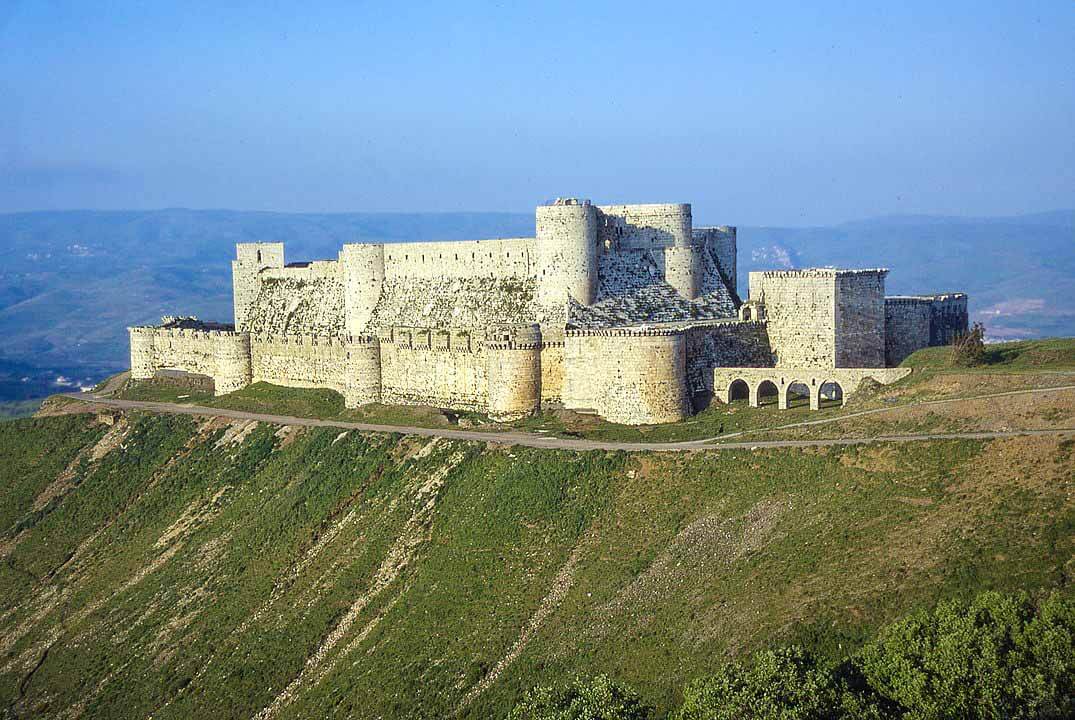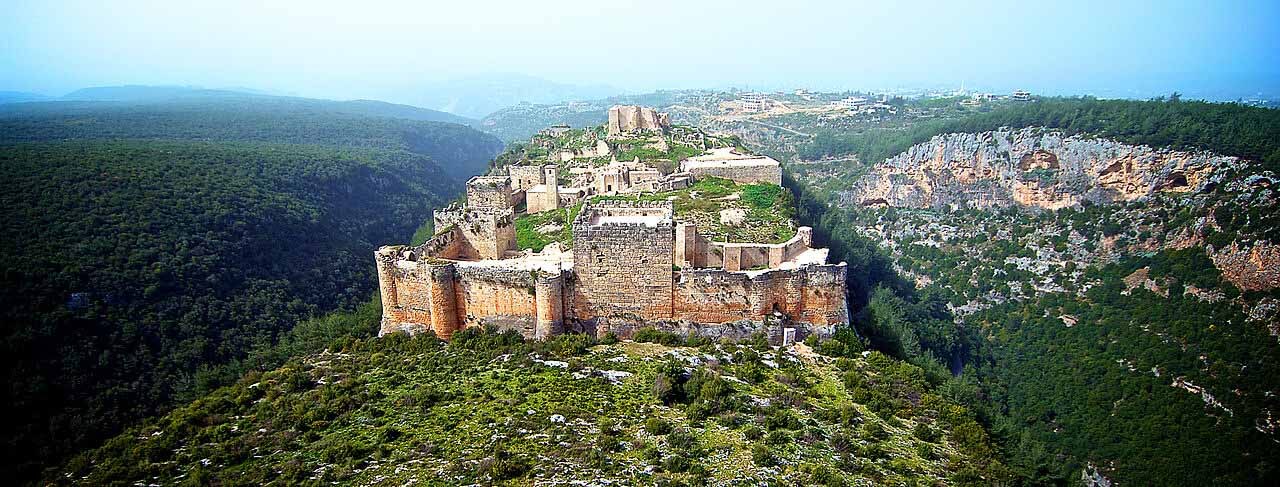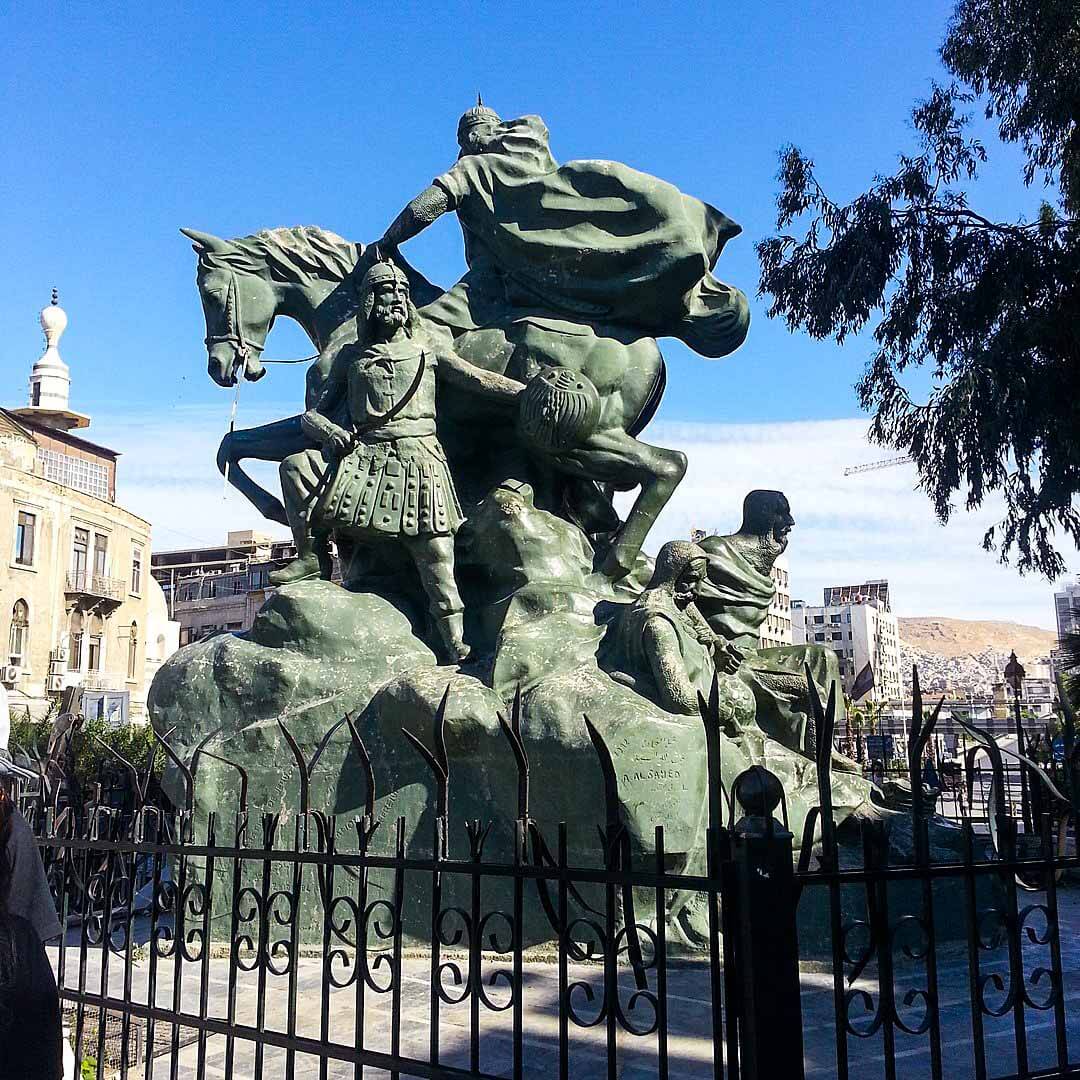Al-Husn, Syria
Coordinates: 34.757000, 36.294700
Krak des Chevaliers (Fortress of the Knights), was a Crusader castle in Syria and one of the most important preserved medieval castles in the world.
The site was first inhabited in the 11th century by Kurdish troops garrisoned there by the Mirdasids.
In 1142 it was given by Raymond II, Count of Tripoli, to the order of the Knights Hospitaller. It remained in their possession until it fell in 1271.
The Hospitallers began rebuilding the castle in the 1140s and were finished by 1170 when an earthquake damaged the castle.
The order controlled a number of castles along the border of the County of Tripoli, a state founded after the First Crusade.
Krak des Chevaliers was among the most important, and acted as a center of administration as well as a military base.
The first half of the century has been described as Krak des Chevaliers’ “golden age”. At its peak, Krak des Chevaliers housed a garrison of around 2,000. Such a large garrison allowed the Hospitallers to exact tribute from a wide area.
From the 1250s the fortunes of the Knights Hospitaller took a turn for the worse and in 1271 Mamluk Sultan Baibars captured Krak des Chevaliers after a siege lasting 36 days, supposedly by way of a forged letter purportedly from the Hospitallers’ Grand Master that caused the Knights to surrender.
Fall of Krak des Chevaliers to Muslims
The Crusader fortress of Krak des Chevaliers fell to the Mamluk sultan Baibars in 1271. Baibars went north to deal with Krak des Chevaliers after the death of Louis IX of France on 29 November 1270.
Before marching on the castle Baibars captured the smaller castles in the area, including Chastel Blanc.
On 3 March 1271, Baibars’ army arrived at Krak des Chevaliers. By the time the Sultan arrived the castle may already have been blockaded by Mamluk forces for several days.
Peasants who lived in the area had fled to the castle for safety and were kept in the outer ward. As soon as Baibars arrived he began erecting mangonels, powerful siege weapons which he would turn on the castle.
According to Ibn Shaddad, two days later the first line of defences was captured by the besiegers; he was probably referring to a walled suburb outside the castle’s entrance.
Rain interrupted the siege, but on 21 March a triangular outwork immediately south of Krak des Chevaliers, possibly defended by a timber palisade, was captured.
On 29 March, the tower in the south-west corner was undermined and collapsed.
Baibars army attacked through the breach and on entering the outer ward where they encountered the peasants who had sought refuge in the castle.
Though the outer ward had fallen, and in the process a handful of the garrison killed, the Crusaders retreated to the more formidable inner ward.
After a lull of ten days, the besiegers conveyed a letter to the garrison, supposedly from the Grand Master of the Knights Hospitaller in Tripoli which granted permission for them to surrender.
Although the letter was a forgery, the garrison capitulated and the Sultan spared their lives.
The new owners of the castle undertook repairs, focused mainly on the outer ward.
The Hospitaller chapel was converted to a mosque and two mihrabs were added to the interior.
Present
Since 2006, the castles of Krak des Chevaliers and Qal’at Salah El-Din have been recognised by UNESCO as World Heritage Sites.
It was partially damaged in the Syrian civil war from shelling and recaptured by the Syrian government forces in 2014.
Since then, reconstruction and conservation work on the site had begun. Reports by the UNESCO and the Syrian government on the state of the site are produced yearly.
Know This
Plan to spend two to four hours to tour this bastion and wear solid walking or hiking shoes as there are a great deal of steps to climb if you really want to see the entire stronghold.
The entrance fee is extremely inexpensive and low priced and there was a guide available if you desired to utilize his services.
It is a very popular tourist destination, one of the must-see sights of Syria.





















